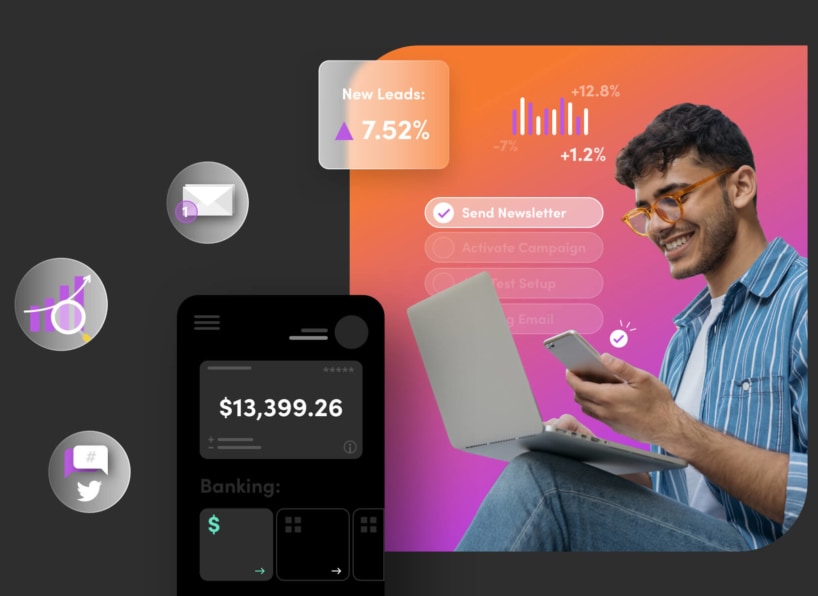Website call tracking isn’t sexy. It doesn’t actively push traffic to your site or encourage visitors to convert. At first glance, it can be hard to understand how call tracking even works – making it even more difficult to justify as part of your marketing plan. But make no mistake about it: If you are not using call tracking to identify how incoming callers are finding your business, your digital marketing strategy is incomplete.
It’s hard to prove whether your print marketing, paid advertising, or organic search is providing the best ROI for your business. Without website call tracking set up, you’re missing out on marketing analytics for a key portion of your audience: direct callers.
How Does Call Tracking Work?
Call tracking involves creating a unique phone number for each marketing source or campaign, so when people respond you know what campaign connected them to you. When a customer dials the tracking number (whether it’s from print marketing, organic search, or a paid advertising campaign), the source is attributed, recorded, and automatically forwards to your business number. Here are three different examples:
- Offline Call Tracking – Let’s say you’re attending a tradeshow and printed 500 product guides. Whew, that was a big chunk of your print budget. If you utilize a tracking number, each time a visitor calls that unique number, you have a record of both the caller and how they found you. Without tracking, you have no idea if the print product guides were an investment that paid off.
- Organic Call Tracking – How do you know if specific leads found you through your website? Organic call tracking dynamically attributes the search term they used and the links they clicked before accessing the tracking number. Then, it compiles the user path data in Google Analytics.
- Paid Call Tracking – When you set up a PPC campaign, you want to know whether or not it brought in leads. With paid call tracking, when a visitor clicks on a paid search ad, the phone number switches dynamically to a tracking number and records as a goal in Google Analytics.
Based on the sophistication of your call tracking software, you can observe exactly how customers are engaging with your business by analyzing the unique tracking numbers; tracing their individual user paths on your website; and discovering exactly how they obtained the tracking number.
This data provides valuable insights regarding your digital marketing strategy, proves the value of each marketing effort, and even helps you determine where you should focus your time and budget.
Why Do You Need Call Tracking?
Have you ever allocated time and money to a marketing campaign only to look back after six months and wonder if it actually worked? If you’re simultaneously running PPC campaigns, email marketing, and giving out print collateral at tradeshows, you need to know exactly which channels bring in the most leads (and which ones are underperforming). Call tracking enables you to stop guessing.
 How to Make the Most of Your Call Data
How to Make the Most of Your Call Data
So, someone called the number. What happened after that? There are a lot of reasons why someone would pick up the phone and call your company. They might not even have been interested in buying your product/service.
One common pushback regarding website call tracking is: How do we know that this call was even a lead? The short answer is that sometimes, you don’t. But there are several things you can do to make sure your website call tracking reporting is as accurate as possible.
- Add a sales number. If your website doesn’t have one already (and a sales number is applicable to your product/service), this should be your first move. A general listed phone number acts as a catch-all; leads might call this number, but it’s also likely you’ll get existing customers, employees, and general company inquiries. A sales number represents clear intent – for both you and your website visitors.
- Enable call recording, if available. While not necessarily for listening in on every call your company receives, call recording can provide a gut-check on whether or not your listed phone number is accomplishing your goals. Are callers interested in buying your product/service? Are most calls service-related? Are your employees responding to customer inquiries accurately? Keeping an eye on user intent and employee response can help keep your strategy on track. (Note: Make sure to add a recording disclaimer, especially if your state requires one by law.)
- Talk to the people who are answering the phone. If you’re not answering these calls yourself, check in with those who are. Ask how often they receive calls from leads and double check that those leads are showing up in your call tracking data.
- Analyze your data consistently. Have the calls you’re counting as leads been confirmed? Double check your data and don’t be afraid to consult with your client and/or sales team if anything looks funky.
Implementing CallRail Website Call Tracking
There are several call tracking options available online — CallRail being at the top of the list. CallRail’s online support provides thorough instructions for setup and integration with Google Analytics — something that is crucial when looking to track and measure performance.
CallRail allows for two different types of call tracking: source-level tracking and keyword-level tracking.
- Source-level tracking will tell you how your callers found you online, whether through a Google search, by clicking on one of your ads, typing in your website directly, on a referring website or through social media. Source-level allows tracking for phone numbers on offline sources too, like printed ads or billboards.
- Keyword-level tracking enables you to link callers to their actions on your site at a micro-level. This means that you can see which keywords users are likely to search before they call you. This can help you step up your keyword targeting and SEO tactics, which will ultimately help your website perform better.
While it’s easy to get lost in the bells and whistles of CallRail’s features, it’s important to remember the singular reason why your website needs this tool: to close a tracking hole. You’re spending time and money to optimize your digital presence, so you absolutely need to account for the telephone leads that these efforts are generating.
Website call tracking is a key tool in proving the value of your marketing efforts and in helping you shape the next moves of your digital marketing strategy. Detailed data about how callers are responding to your marketing efforts? Now that’s sexy.
Still have questions? We love talking about digital marketing strategies. Give us a shout and let’s talk tracking.
 How to Make the Most of Your Call Data
How to Make the Most of Your Call Data




